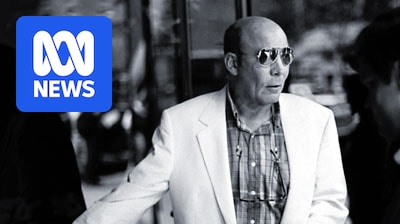
The apparent suicide of journalist and author Hunter S. Thompson is under review by investigators in Colorado, more than two decades after his death. Thompson, 67, died on February 20, 2005, at his Woody Creek home, of what investigators at the time ruled was a suicide. This week, the Colorado Bureau of Investigation (CBI) announced it would be reviewing the case.
The Pitkin County Sheriff’s Office, which conducted the original investigation, stated there is no new evidence suggesting foul play in Thompson’s death. However, the independent review by the CBI was initiated following a request by Thompson’s widow, Anita Thompson. Sheriff Michael Buglione expressed a desire to address lingering questions surrounding the author’s death, stating, “We understand the profound impact Hunter S. Thompson had on this community and beyond. By bringing in an outside agency for a fresh look, we hope to provide a definitive and transparent review that may offer peace of mind to his family and the public.”
Moments Leading Up to Thompson’s 2005 Death
Police were called to Thompson’s property around 6 pm after his son, Juan Thompson, reported a shooting. The “fortified compound” Thompson called Owl Farm was built on a 44-hectare property in the unincorporated town of Woody Creek, northwest of Aspen. As police officer John Armstrong approached the home, he heard three more gunshots.
“I told Juan I had heard gunshots and asked who was shooting and why,” Armstrong noted in his incident report. At the time, Juan Thompson was visiting his father with his wife and son. Friends and family mentioned that Thompson was recovering from a hip replacement surgery, back surgery, and a recently broken leg. In the days leading up to his death, he had given family heirlooms and rare book copies to his son and discussed his wishes for his remains.
On the day of his death, Anita Thompson reconciled with her husband before leaving for a fitness class in nearby Aspen. Later, they discussed a recent argument involving a pellet gun incident, which had narrowly missed her head. Minutes after their call, Juan Thompson heard a “dull sound, not a sharp crack typical of a gunshot,” according to the police report. A handgun was found beside Thompson’s foot, and authorities concluded the death was self-inflicted.
Discussions of CBI Review Began in April
A CBI special agent has been assigned to review the 2006 report. Depending on the findings, the CBI may decide to reopen the case or affirm the original conclusion. Sheriff Buglione indicated that discussions about the review began in April 2025, emphasizing that Anita Thompson’s concerns were more about rumors from friends and relatives rather than the original investigation.
“I discussed the possibility of bringing in the Colorado Bureau of Investigation, and they were open and willing to do that. I gave Ms. Thompson those options of doing a case review or reopening the investigation,” Buglione explained.
Anita Thompson opted for a case review. The sheriff clarified that the review was not requested due to Thompson’s celebrity status, adding, “I would do it for anybody in Pitkin County who lost a loved one.” Neither Anita nor Juan Thompson has commented publicly on the review.
Thompson’s ‘Gonzo’ Legacy
Born in Kentucky in 1937, Hunter S. Thompson joined the US Air Force at 19, working as a sports writer for an air base newspaper. He gained prominence with his book Hell’s Angels, where he detailed the lives of the motorcycle club members after living among them for a year. This work laid the foundation for “Gonzo” journalism, a subgenre where the writer becomes a central part of the narrative, discarding objectivity.
Thompson’s 1972 book Fear and Loathing in Las Vegas, a partly autobiographical novel, became his most famous work and was adapted into a film starring Johnny Depp and Benicio del Toro in 1998. In 1970, Thompson ran for Sheriff in Pitkin County, narrowly losing the election. After his death, his ashes were fired from a cannon at Owl Farm, attended by friends, family, and celebrities like Depp and Sean Penn.
The review of Thompson’s death underscores the enduring intrigue surrounding his life and work. As the CBI proceeds with its investigation, questions about the circumstances of his death continue to captivate those who remember him as a pioneering and controversial figure in American journalism.







